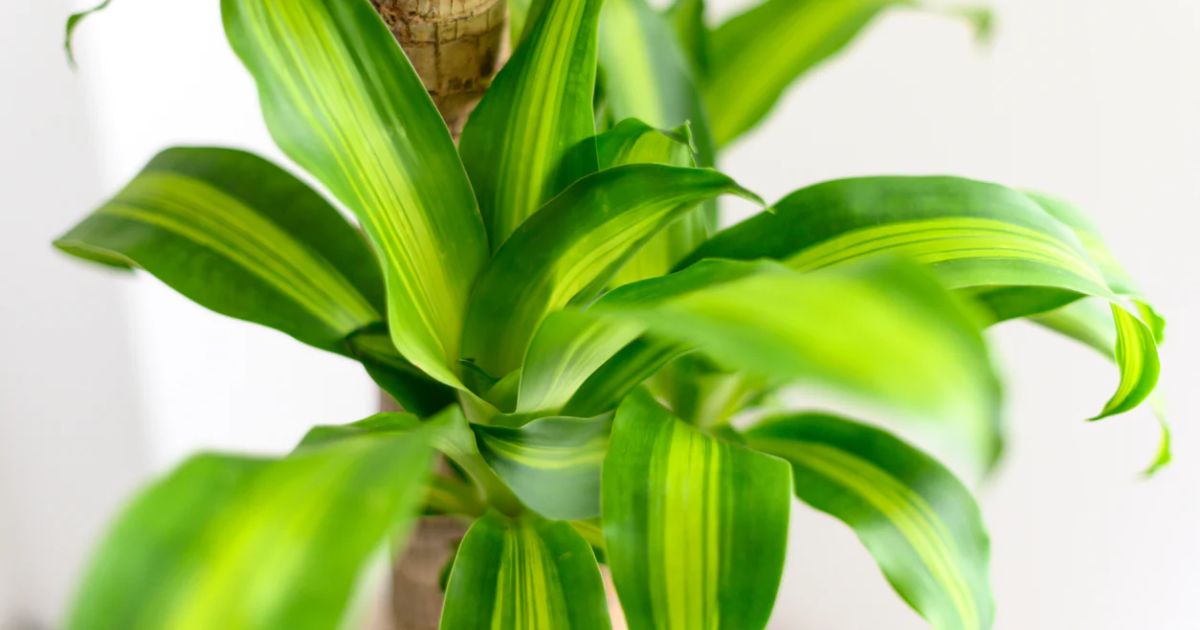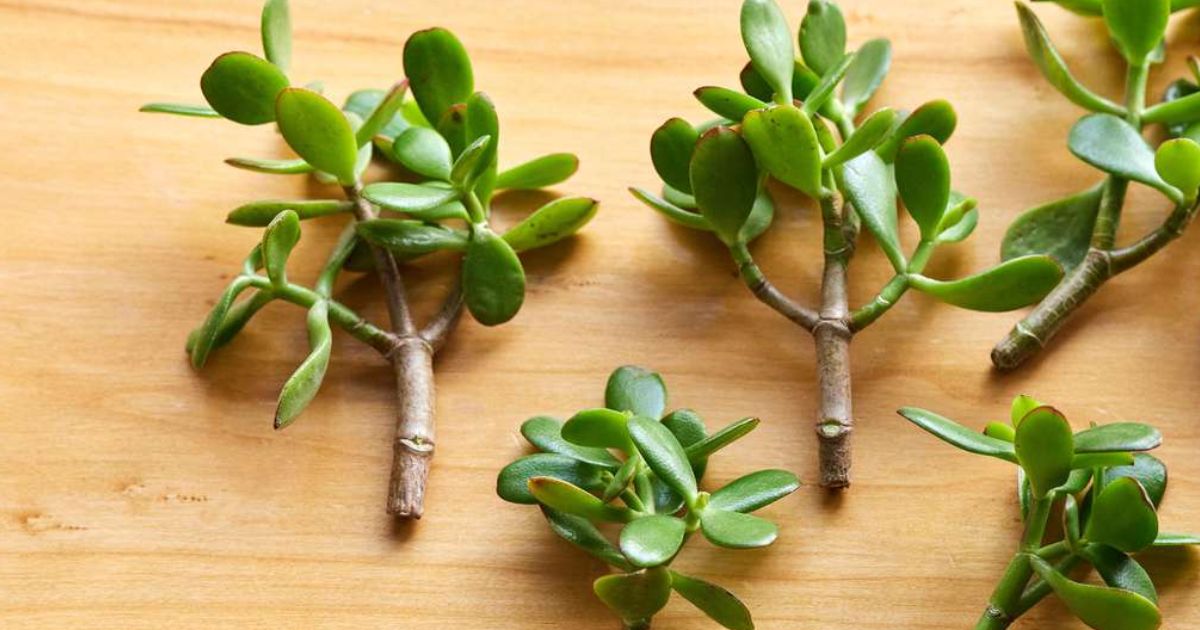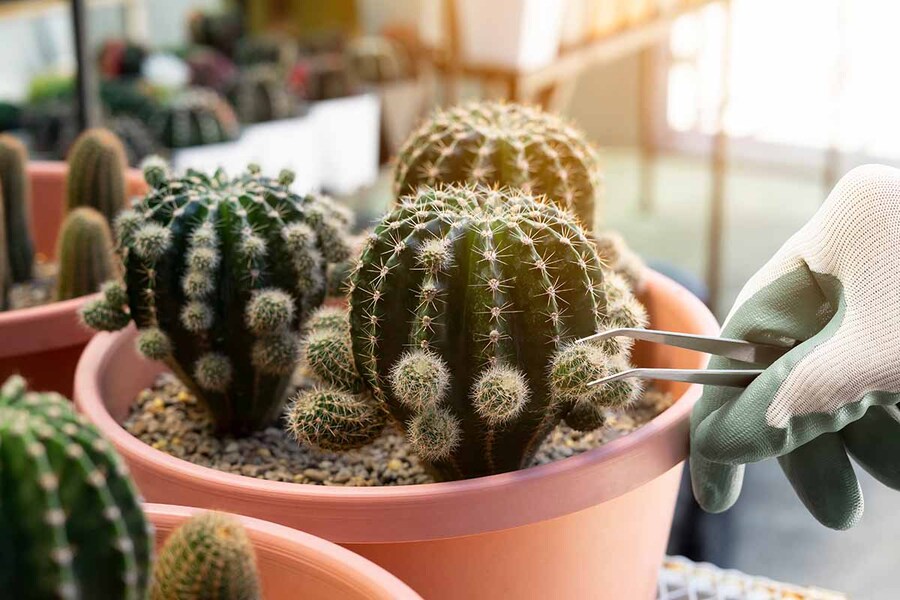How To Propagate Cactus: 3 Easiest and Fastest Methods
How To Propagate Cactus: 3 Easiest and Fastest Methods
Key Takeaways
- Cactus propagation from cuttings involves cutting a piece of the cactus and allowing it to callus over before planting it to grow a new plant. This method is beneficial as it is cost-effective and reduces waste by using parts of existing plants.
- Cactus propagation from a pad is removing a pad from a mature cactus, allowing it to dry and form a callus, and then planting it in the soil to grow a new plant. This method is simple and efficient, allowing for the rapid expansion of your cactus without seeds.
- Cactus propagation from an offset involves detaching small cactus offshoots that naturally grow from the base or sides of the parent plant and planting them separately. This method ensures the parent's traits are preserved in the new plants.
What Is The Best Time To Propagate Cactus?
The best time to propagate cacti is late spring and early summer ( from May to July), generally during the warmer months when they are actively growing. During the warmer months, the cacti have a higher metabolic rate, aiding in faster healing of the cut sites and reducing the risk of rot. After taking the cactus cuttings, let them callus over for a few days before planting.
How To Propagate Cactus: 3 Easy Methods
Regarding how to propagate a cactus, you must know 3 easy and effective methods of cactus propagation cutting, pad, and offset.
1. Propagate From Cuttings
"Propagate from cuttings" refers to a standard method of plant propagation where parts of a plant, typically stem, leaf, or root sections, are cut (also called plant cutting) and encouraged to grow into new plants.
This method leverages the ability of many plants to form new roots and shoots from cut segments. Below, we will see how to propagate cactus from cuttings.
What you'll need:
- Pruning/knife/scissors
- Potting mix
- Rooting hormone (Optional)
Step-by-step guideline:
- Identify a healthy part of the cactus you wish to propagate, we recommend branches or segments of the stem. Look for sections that are free of disease and pests.
- Make a straight cut to remove the cactus segment using a clean, sharp knife or scissors. Be sure to wear gloves to protect your hands from the spines.
- Place the cutting in a dry, shaded place and allow it to form a callus over the cut surface. This process typically takes 1 to 2 weeks, depending on humidity and temperature.
- Use a well-draining soil mix, ideally one formulated for cacti. This mix typically contains normal potting soil, coarse sand, and perlite or pumice.
- Once the callus has formed, plant the cutting in the potting mix. Insert the cut end into the soil. You can bury about a quarter to a third of the cutting in the soil to ensure it stands upright.
- Water sparingly to avoid soggy soil. After the first four weeks, reduce watering and only water when the soil is arid.
See more: How To Propagate A Peach Tree: Basic Steps for Beginners
2. Propagate From A Pad
A "pad" is a flattened stem segment of the cactus that appears more leaf-like but is a modified stem. These pads are thick and fleshy, adapted for storing water and performing photosynthesis. Below is a comprehensive guide on how to propagate cactus from a pad
What you'll need:
- Protective gloves
- Pad
- Potting soil, coarse and perlite or pumice
Step-by-step guideline:
- Choose a mature, healthy pad from the cactus you want to propagate. The pad should be firm and free of any signs of disease or pests.
- Wear gloves for protection, and carefully twist off the pad from the main plant. If it doesn't come off quickly by hand, use a clean, sharp knife. Make sure to make a clean cut close to the joint.
- Allow the pad to dry in a shaded, cool place for about 1 week. This drying period lets the cut end callus over, which is crucial to prevent rotting when planted.
- Use a well-draining cactus mix of potting soil, coarse sand, and perlite or pumice. This type of soil ensures good drainage and is critical for cactus health.
- Once the cut end has callused, plant the pad upright in the soil. Bury about one-third of the pad in the soil to ensure it stands firmly. Some prefer to lay the pad flat on the soil, which encourages rooting but takes up more space.
See more: How To Propagate Fig Tree: A Comprehensive Guide By Experts
3. Propagate From An Offset
Offsets are small cacti that grow from the base or sides of the parent plant and are genetically identical to the parent. Propagating a cactus from an offset—sometimes called a "pup" or "daughter plant"—tends to establish and grow faster than cuttings.
They are miniaturized versions of the parent plant, already adapted to the local growing conditions. Here's how to propagate cactus from an offset
What you'll need:
- Protective gloves
- Knife/pruning/scissors
- Well-draining cactus soil mix
Step-by-step guideline:
- Choose a healthy-looking offset that has grown a decent size, typically a few inches in diameter, which indicates it might sustain itself when separated.
- Remove the soil around the base of the offset slightly to expose its connection to the parent plant. Remember to wear a protective glove.
- Use a clean, sharp scissors or knife to cut the offset away. Ensure the tool is sterilized to prevent infection.
- Place the offset in a dry, shaded spot for a few days to a week, allowing the cut surface to dry and form a callus. This step is crucial for cactus to prevent rot once the offset is planted.
- Use a well-draining cactus mix( regular potting soil, coarse sand, perlite, pumice), ensuring excess water drains quickly, reducing the risk of root rot.
- Once the cut end has callused, plant the offset in a pot filled with the prepared cactus mix. Bury the base of the offset deep enough so it stands upright and is stable.
See more: How To Propagate Pine Trees: Step-By-Step Guide for Starters
Notices For Indoor Cactus Propagation
- One common mistake gardeners make when caring for a propagated cactus is overwatering. Cacti require less water than many other plants, and their roots are especially susceptible to rot if the soil is too moist.
- To avoid similar unwanted mistakes, see the following tips:
- When your cactus blooms in spring and summer, water it every ten days and let the water drain thoroughly. In the winter, reduce watering to once every four weeks (and every six weeks for some desert species).
- Cacti like hot temperatures between 70 and 80 degrees Fahrenheit. In winter, they prefer cooler temperatures, around 55 degrees Fahrenheit.
- Desert cacti can handle very chilly nights, with some species tolerating temperatures as low as 35 degrees Fahrenheit. However, any indoor plant not hardened off must be protected from winter drafts.
- Cacti prefer 40 to 60 percent humidity, which is usually easy to achieve in most homes. Forest cacti have slightly more humid air than desert cacti. If you see your succulent plant wilting, mist it occasionally.
- Fertilize your cactus twice to thrice a year, only during the growing period, and follow the manufacturer's recommended amounts. Reduce or eliminate fertilizer during the winter.
Frequently Asked Questions
1. Can You Grow A Cactus From A Cutting?
Absolutely. You can propagate most cacti and succulents from stem or leaf cuttings. For a comprehensive guide on how to propagate a cactus, see the comprehensive guide we introduced above.
2. Is It Better To Propagate Cactus In Water Or Soil?
Propagating cacti in soil is generally considered more effective and traditional than propagation in water. Soil provides a more natural environment for cacti, adapted to grow in dry, arid conditions.
Meanwhile, Cacti can not naturally adapt to waterlogged conditions, and prolonged exposure to water can lead to rot, particularly if the water is not changed regularly or if the cut surface hasn't been adequately cut before immersion.
3. What Is The Fastest Way To Root A Cactus?
When planting a cactus, bury it about one-third of the way in the soil, leaving two-thirds above it. Put the newly potted cutting in a spot that gets lots of sunlight. Remember to water it to take root and get the oxygen it needs.




